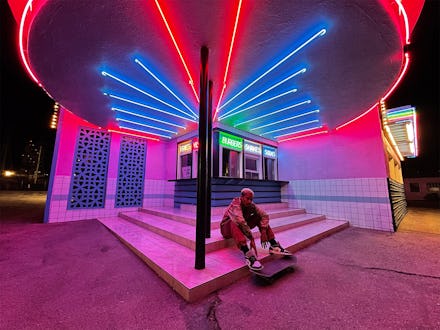How to take killer photos with your iPhone 12 and iPhone 12 Pro camera

The iPhone 12 Pro and iPhone 12 come with new, high-quality cameras that prove Apple is done playing hardware catch-up with its Android rivals. With a better selfie camera and three wide-angle lenses on the back, the iPhone 12 Pro models in particular are very competitive with the camera from a Samsung Galaxy S20 Plus. Part of that can be attributed to Apple's great camera software.
The strength of an iPhone camera has never really been in the hardware. It's always been in the tools and automatic adjustments made by the phone that enhance photos to a professional level. It's the reason why pics from an iPhone 11 can still surprise with their quality, even though the cameras are technically not as good.
So here's a brief look at how you can set up these tools to make your iPhone 12 pics look their absolute best.
iPhone 12 and iPhone 12 Pro differences
The biggest difference between the iPhone 12 and iPhone 12 Pro is the number of camera lenses on the back of the smartphone. The iPhone 12 has two cameras on the back and one selfie camera on the front. The iPhone 12 Pro has three cameras on the back and one front-facing camera.
Both models have upgraded lenses that allow for better color quality and nighttime photography. However, the iPhone 12 Pro has the better camera system with its additional telephoto lens, which improves photo quality when zooming in, and a LiDAR sensor that improves dim portraits and shutter speeds.
The Pro models are the ones to go for if portable photography and cinematography is your jam.
Set up your camera
iPhone cameras can be set before taking photos so you can focus on your pic instead of fiddling with your settings. It's worth taking the time to set yours up and lock them in to avoid fighting with auto-adjustments.
The bottom row of icons feature different settings you can adjust before taking your photo. Toggle whether to turn the flash on, what size you want the photo, the level of zoom, and whether you need a timer. Try turning on live photo to take multiple rapid pics of exactly 1.5 seconds before and after you hit the shutter. You can then browse through to choose the best shot of the bunch. This helps avoid photos getting ruined when someone blinks.
Another option is taking burst photos, although you have to be in contact with your phone the entire time to do this. Tap the shutter button and drag it to the left. Your camera will rapidly take a bunch of photos until you let go of the button.
You can also adjust and lock your exposure settings beforehand, so your phone doesn't autocorrect the exposure as you're trying to focus on your subject. Photo filters can be locked before snapping a pic as well.
Take advantage of 'portrait mode'
Portrait mode is the setting you use to make those neat pics that focus squarely on the subject while blurring the background a bit to create a "depth-of-field" effect. There's different filters for this mode, too; studio lighting, natural lighting, stage lighting, and more.
This works for both the front and back cameras, so your selfies can have that depth-of-field look, too.
Speaking of selfies, here's another tip: If you find yourself constantly flipping your selfies because you don't like the reversed look, then go straight into your settings app. Scroll down to the camera app and tap it. You'll see an option to turn on the "Mirror Front Camera" setting, which will keep all selfies mirrored — so raising your left hand will result in a picture with your raised hand on the left.
Use 'night mode' to brighten up nighttime pics
Night mode is the key to taking amazing, clear photos in dim lighting. The night mode setting will automatically pop up when your camera detects low light in the area.
This nifty mode is available on all cameras, front and back, so you can feel free to take some midnight selfies, too.
Play around with filters and editing tools
The camera's software will automatically adjust sharpness, color, and contrast to make your photos pop. This makes for some beautiful scenery and panoramic views if you can get your shots right. Remember to flip your phone around if you want your pics taken in vertical or landscape mode.
Be wary of zooming in too much because photos can start to look a bit grainy. You'll also get less-than-perfect pics if there's too much lighting coming from behind the subject and directly into the camera lens.
Lastly, you can always add and adjust filters to add a touch, but not a lot, of warm color over the image. Or use other editing tools to put a spotlight on a subject. Have some fun playing around with your options by mixing and matching different things.